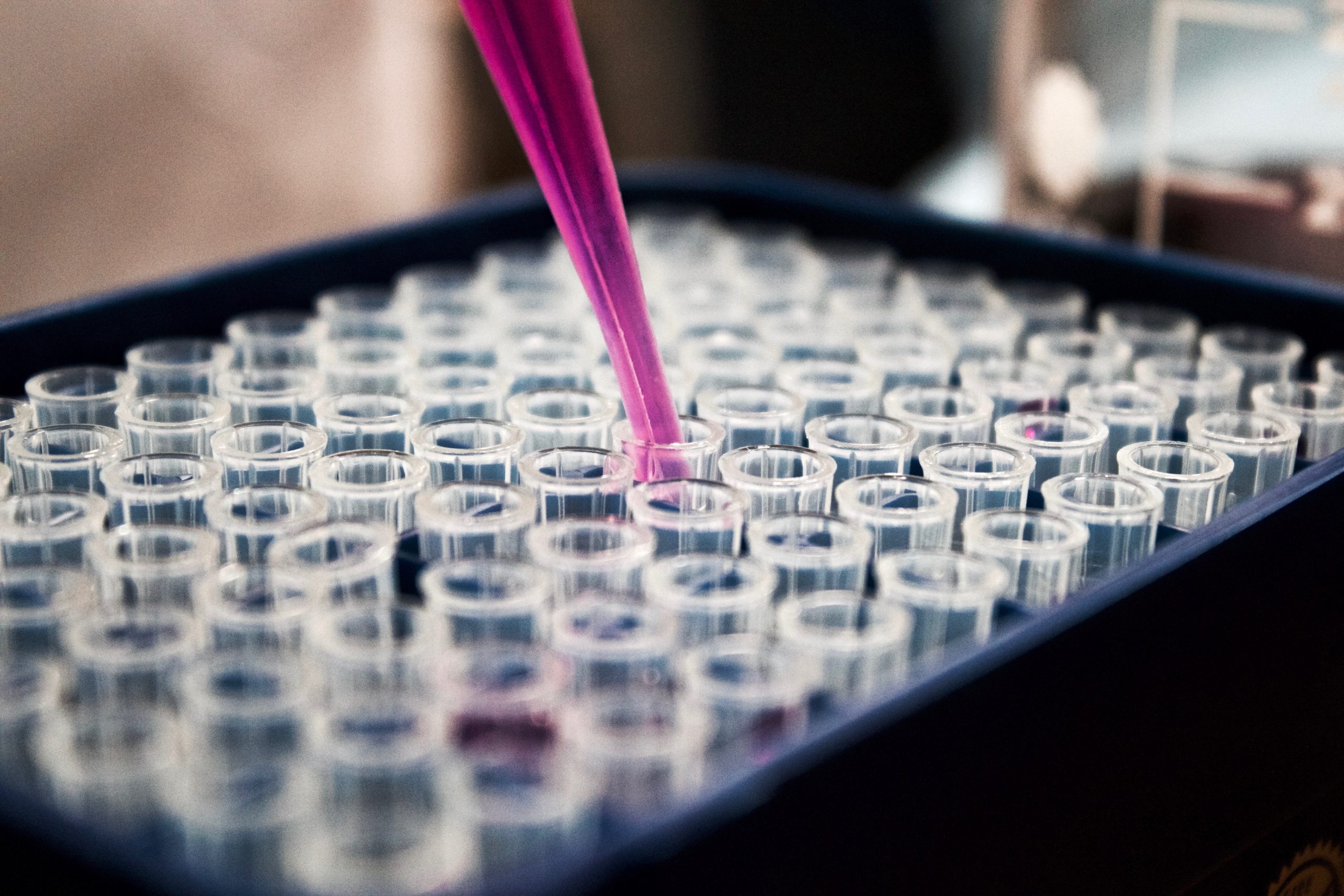In the ever-evolving field of medicine, there is a groundbreaking technology that is poised to transform the way we treat diseases. Enter microbots, these miniature machines have the potential to revolutionize medicine by delivering targeted treatments directly to affected areas in the body. Imagine a future where these tiny robots navigate through blood vessels, identifying and eliminating cancerous cells or clearing blocked arteries effortlessly. This article explores the incredible potential of microbots and how they are set to change the landscape of healthcare as we know it. Get ready to explore the world of these fascinating tiny machines and their potential impact on the future of medicine.

1. Understanding Microbots
Microbots, also known as micron-scale robots, are revolutionary machines that have the potential to make a profound impact on the field of medicine. These tiny robots, typically ranging in size from one to several hundred micrometers, are designed to carry out various tasks within the human body. They are constructed using advanced materials and cutting-edge technologies, enabling them to navigate through the intricate network of blood vessels and tissues with precision and ease.
1.1 What are Microbots?
Microbots are miniature robots that are specifically engineered to perform tasks at the microscopic level. Unlike traditional robots, which are often large and rigid, microbots possess a high degree of flexibility and maneuverability. This allows them to access hard-to-reach areas within the body, such as blood vessels and organs. Microbots can be controlled remotely or programmed to carry out autonomous actions, depending on their design and intended purpose.
1.2 How Microbots Work
Microbots operate by utilizing a combination of different technologies, including microelectronics, advanced sensors, and wireless communication systems. These components enable the robots to sense their surroundings, make informed decisions, and perform specific actions. By integrating microscale sensors and actuators, microbots are capable of navigating through the complex environment of the human body. They can be powered by various sources, such as external magnetic fields or internal chemical reactions, depending on their design and intended application.
1.3 Applications in Medicine
The potential applications of microbots in medicine are vast and far-reaching. These tiny machines have the ability to revolutionize various aspects of healthcare, ranging from diagnostics and imaging to surgery and drug delivery. In the field of diagnostics, microbots can be used to collect biological samples for analysis, enabling faster and more accurate diagnosis of diseases. Additionally, microbots hold great promise in targeted drug delivery, as they can be engineered to transport medications directly to the affected area, minimizing systemic side effects. Furthermore, microbots can be utilized in surgical procedures, allowing for minimally invasive interventions and reducing patient discomfort and recovery time.
2. Advantages of Microbots
Microbots offer numerous advantages over traditional medical techniques and devices. These advantages make them an attractive option for medical professionals and researchers alike.
2.1 Precise Targeting
One of the key advantages of microbots is their ability to precisely target specific areas within the body. Traditional medical interventions often rely on a trial-and-error approach, leading to potential complications and extended recovery periods. However, microbots can navigate through the body with exceptional accuracy, allowing for targeted treatments and interventions. This precise targeting can result in more effective and efficient medical procedures, improving patient outcomes.
2.2 Minimally Invasive Procedures
Microbots enable minimally invasive procedures, which have significant advantages over traditional open surgeries. By utilizing microbots, medical professionals can access and treat internal structures without the need for large incisions. This results in reduced trauma to the body, decreased risk of infection, and shorter recovery times for patients. Furthermore, the use of microbots in minimally invasive procedures can lead to improved cosmetic outcomes, as there is minimal scarring or disfigurement.
2.3 Improved Drug Delivery
Microbots have the potential to revolutionize drug delivery systems by enabling targeted and controlled release of medications. Traditional oral or intravenous drug delivery often results in systemic exposure and unintended side effects. However, microbots can be engineered to carry drugs directly to the site of disease or injury, minimizing systemic exposure and maximizing therapeutic efficacy. This targeted drug delivery approach holds great promise for treating a wide range of conditions, including cancer, neurological disorders, and cardiovascular diseases.
3. Challenges and Limitations
While microbots offer immense potential in the field of medicine, there are several challenges and limitations that need to be overcome for their widespread adoption.
3.1 Power Source and Control
One of the main challenges in microbot development is identifying a suitable power source and control mechanism. Given their small size, microbots have limited space for onboard power sources. Furthermore, ensuring reliable and precise control over these tiny machines is a significant technical hurdle. Researchers are currently exploring various solutions, such as utilizing external magnetic fields or harnessing the body’s own chemical reactions for power generation.
3.2 Navigation and Manipulation
Navigating through the complex environment of the human body is a complex task for microbots. The intricate network of blood vessels and tissues presents numerous challenges in terms of navigation and manipulation. Microbots need to be able to move smoothly and efficiently through narrow passages and around obstacles without causing damage to surrounding tissues. Additionally, they need to be capable of manipulating objects or performing delicate actions with precision. Overcoming these challenges is crucial for the successful implementation of microbots in medical applications.
3.3 Potential Side Effects
As with any new technology, microbots also raise concerns regarding potential side effects and safety issues. The interaction between microbots and the human body is still being extensively studied to understand any potential long-term effects or unintended consequences. Furthermore, ensuring the biocompatibility of materials used in microbot construction is crucial to minimize risks of adverse reactions or tissue damage. Addressing these safety concerns is paramount before widespread clinical use of microbots can be realized.
4. Current and Future Applications in Medicine
Microbots are already making significant strides in the field of medicine, with a wide range of applications being explored.
4.1 Diagnostics and Imaging
Microbots have the potential to revolutionize the field of diagnostics and imaging. These tiny machines can be designed to interact with specific biomarkers or target cells, allowing for targeted sampling and analysis. They can collect biological samples, such as blood or tissue, with high precision and accuracy, enabling rapid and accurate diagnosis of diseases. Additionally, microbots can be utilized as imaging agents, providing detailed images of internal structures and aiding in the early detection of abnormalities.
4.2 Surgery and Interventional Procedures
The use of microbots in surgery and interventional procedures holds great promise for improving patient outcomes. Microbots can be deployed to perform intricate tasks, such as suturing, tissue repair, or removal of diseased tissue, with minimal invasiveness. This can result in reduced trauma to the patient, shorter recovery times, and improved surgical precision. Furthermore, the use of microbots in procedures such as catheterization or stent placement can minimize the risks associated with traditional techniques, leading to improved patient safety.
4.3 Drug Delivery and Therapeutics
Targeted drug delivery is an area where microbots have immense potential. By engineering microbots to carry drugs directly to the affected area, therapeutic efficacy can be significantly improved while minimizing systemic side effects. This approach has the potential to revolutionize the treatment of various diseases, including cancer, neurological disorders, and cardiovascular conditions. Additionally, microbots can be utilized as therapeutic agents themselves, delivering targeted therapies such as gene editing or immunotherapy.

5. Examples of Microbot Technology
Microbot technology encompasses a wide range of advancements in the field. Here are a few examples of the different types of microbots currently being developed.
5.1 Nano- and Microscale Robotics
Nano- and microscale robotics involve the development of tiny machines capable of carrying out specific tasks within the human body. These robots can be remotely controlled or programmed to carry out autonomous actions, depending on their design. For example, researchers have developed microbots that can swim through the bloodstream to deliver drugs or perform targeted therapies. These microbots utilize tiny propellers or legs to navigate through the blood vessels and reach their intended targets.
5.2 Swarm Robotics
Swarm robotics refers to the coordination of multiple microbots working together to achieve a common goal. Inspired by the collective behavior of natural swarms, such as ants or bees, researchers are developing microbots that can collaborate to perform complex tasks. For instance, swarm robotics can be utilized in the removal of blood clots, with each microbot contributing to the clot dissolution process. Swarm robotics has the potential to enhance the efficiency and effectiveness of medical interventions, particularly in situations that require a collective effort.
5.3 External Control Systems
In addition to autonomous microbots, external control systems are being developed to guide and manipulate these tiny machines. These systems utilize various technologies, such as magnetic fields or ultrasound, to remotely control the movement and actions of microbots. For example, magnetic fields can be used to guide microbots through the body, targeting specific areas for intervention or drug delivery. External control systems offer a non-invasive approach to microbot manipulation and enable real-time adjustments based on the needs of the procedure.
6. Ethical and Safety Considerations
As with any emerging technology, the use of microbots in medicine raises important ethical and safety considerations that need to be addressed.
6.1 Privacy and Data Security
As microbots interact with the human body and collect sensitive biological information, ensuring privacy and data security is of utmost importance. Strict protocols and safeguards must be in place to protect patient privacy and prevent unauthorized access or misuse of collected data. Additionally, healthcare providers and researchers must adhere to ethical guidelines and regulations to maintain patient confidentiality and trust.
6.2 Potential Risks and Regulations
The development and deployment of microbots require careful evaluation of potential risks and the establishment of appropriate regulations. Safety risks, such as tissue damage or adverse reactions to microbots, need to be thoroughly investigated and mitigated. It is essential to establish regulatory frameworks that ensure the safe and responsible use of microbots in medical applications. These frameworks should address issues such as design and manufacturing standards, clinical trials, and post-market surveillance, to ensure patient safety.
6.3 Impact on Medical Professionals
The introduction of microbots in medicine may have significant implications for medical professionals. While these tiny machines offer numerous advantages, there may be concerns about the potential displacement of certain medical procedures or professions. However, it is important to recognize that microbots are tools that can enhance the capabilities of medical professionals rather than replace them. Medical professionals will continue to play a crucial role in interpreting data, making clinical decisions, and overseeing the use of microbot technology.

7. The Future of Microbots in Medicine
The future of microbots in medicine holds great promise for advancements in healthcare and patient outcomes. Several trends and areas of research highlight the potential impact of microbot technology.
7.1 Advances in Nanotechnology
Advances in nanotechnology will continue to drive the development of even smaller and more sophisticated microbots. Nanoscale robots hold the potential to navigate even finer structures within the body, such as individual cells or intracellular environments. This level of precision opens up new possibilities for targeted therapies, drug delivery systems, and diagnostics.
7.2 Integration with Artificial Intelligence
The integration of microbot technology with artificial intelligence (AI) will enhance their capabilities and enable the development of autonomous systems. AI can provide real-time decision-making and adaptability to microbots, allowing them to respond to dynamic environments and complex medical scenarios. The combination of microbots and AI has the potential to revolutionize personalized medicine by tailoring treatments to individual patients based on real-time data and analysis.
7.3 Promising Research Areas
Research in microbot technology continues to push the boundaries of what is possible in medicine. Promising areas of research include the development of self-healing microbots, which can repair themselves when damaged, and the exploration of bio-inspired designs that mimic the functionality of natural organisms. In addition, advancements in materials science and biocompatible materials will contribute to the development of safer and more effective microbots.
8. Collaboration and Investment
The development and widespread adoption of microbots in medicine require collaboration among various stakeholders and sufficient investment.
8.1 Public-Private Partnerships
Public-private partnerships play a crucial role in advancing microbot technology. Collaboration between academic institutions, research organizations, and private companies can accelerate the development and translation of research into practical applications. These partnerships facilitate the sharing of knowledge, resources, and expertise, fostering innovation and streamlining the regulatory and commercialization processes.
8.2 Funding and Investment Opportunities
Significant funding and investment opportunities are necessary to support the research and development of microbot technology. Governments, research institutions, and venture capital firms can provide financial support to drive progress in this field. Funding should be directed towards research grants, infrastructure development, and clinical trials, ensuring that promising microbot technologies can be brought to market and benefit patients worldwide.
8.3 Regulatory Frameworks
Establishing clear regulatory frameworks is crucial for the safe and responsible use of microbots in medicine. Government agencies and regulatory bodies need to collaborate with researchers and medical professionals to develop guidelines and standards that ensure patient safety and promote ethical practices. These frameworks should address the design, manufacturing, and deployment of microbots, as well as the collection and usage of data generated by these machines.

9. Conclusion
Microbots are poised to revolutionize the field of medicine, offering unprecedented precision, efficiency, and targeted interventions. These tiny robots have the potential to transform diagnostics, surgery, drug delivery, and many other aspects of healthcare. However, challenges and ethical considerations remain that need to be addressed for their widespread adoption. Through collaboration, investment, and a commitment to patient safety, microbots have the power to shape the future of medicine and improve the lives of countless individuals.













